Strong Words and Token Raids
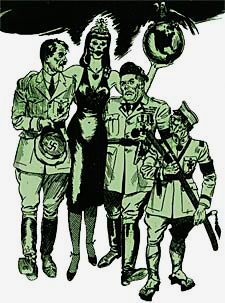 A prostitute carrying venereal disease consorts with Axis leaders, all enemies of the American war effort. (Image source: Footnote 18)
Enlarge image
A prostitute carrying venereal disease consorts with Axis leaders, all enemies of the American war effort. (Image source: Footnote 18)
Enlarge image
With the influx of tens of thousands of servicemen into Oregon to train for war and perform other military work, officials had to contend with the
predictable rise of vices such as prostitution and gambling. Efforts were made to minimize the problem, but no
vice could be completely eradicated. The rise intensified ongoing debates about how to best combat vice, particularly prostitution, from a social health standpoint. Were efforts at complete suppression most effective, or was it better to contain prostitution so it
could be monitored and inspected?
World War I in Oregon
Experts knew prostitution and venereal disease were integral to military buildups. Both problems rose during the Civil War and World War I. In fact, during
World War I the Portland based Oregon Social Hygiene Society went to great lengths to work with the Army to reduce the problem in Oregon and at Fort Lewis in Washington. The Army detailed a medical officer from Fort Lewis to lecture all conscripted men in the state while the society made the arrangements and picked up the tab. Meetings were held in every county seat except
Gold Beach with attendance reaching 40,890.
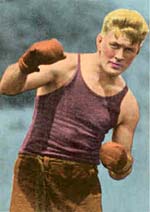 Former boxing champion Gene Tunney tried to convince young men to abstain from sex to keep men "at the peak of physical force" and further the war effort. (Image courtesy The Card Mine)
Former boxing champion Gene Tunney tried to convince young men to abstain from sex to keep men "at the peak of physical force" and further the war effort. (Image courtesy The Card Mine)
But the Hygiene Society also aimed to stiffen law enforcement in the civilian community, hiring an attorney to work with the state and cities to propose and pass effective laws and ordinances. It targeted health laws with particular focus on the "better control of prostitution and its ramifications." The results included the passage of a number of ordinances by Portland and smaller cities in the state. Meanwhile, Oregon Governor James Withycombe used the bully pulpit to reach young men before entering the service. He wanted to dispel the myth that sexual intercourse was "necessary to preserve good health," and to remind boys that there is "a nobler purpose than promiscuous indulgence with immoral women." Despite these efforts and a strong stance by military leaders, experts estimated that the Army lost seven million man-days of service to venereal disease, second only to battle wounds that led to the loss of 17 million man-days of service.
Footnote 1
Reducing the Demand for Prostitutes
Oregon was not alone in confronting problems with prostitution and venereal disease. Tawdry honky-tonk districts sprang up around nearly every major military training camp in the country. The districts took such names as "The Strip" or "Bug Town" and included garish clusters of sleazy hotels, bars, dance halls, and brothels. Ironically, some of the worst were in the "Bible Belt" of the South. Phoenix City, Alabama, just across the river from the massive Fort Benning in Georgia, soon earned the name "Sin City" based on its notorious brothels and brawls. Albany, Georgia, near the Turner Field air base, was so wide open that the women
in one of its brothels used neon lights to advertise their names.
Footnote 2
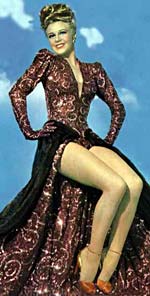 Dance sensation Ginger Rogers owned a ranch near Medford and helped with efforts related to the troops. (Image courtesy Texas National Press)
Dance sensation Ginger Rogers owned a ranch near Medford and helped with efforts related to the troops. (Image courtesy Texas National Press)
Despite the persistence of the problem, clergymen and other protectors of public morality fought the good fight, both to shut down the demand and the supply. Preaching abstinence to young and lonely servicemen was a hard sell, but one former heavyweight boxing champion of the world was willing to try. Lieutenant Commander Gene Tunney, who served as the chief of the Navy's physical fitness program, wrote an article for
Reader's Digest magazine titled "The Bright Shield of Continence." Tunney, a widely respected sports hero, claimed abstinence from sex helped to keep men "at the peak of physical force." He challenged men to remain chaste for the duration of the war, derisively insisting
"any man above the level of a tomcat must realize that the professional's embrace is not only a menace to health but a shameful desecration of ideal love."
Footnote 3
One way to reduce the demand for prostitutes was to keep servicemen busy
with wholesome forms of entertainment. United Service Organizations (USO) centers, more than 3,000 of them across the country, provided servicemen with a variety of diversions and a relaxing clublike atmosphere. Some centers established special features to help lonely GIs. A Medford USO center featured an "Adopt-a-Soldier" program in 1942 during Thanksgiving and Christmas holidays in which a local family would invite a serviceman from nearby Camp White to "a real honest-to-goodness home
cooked meal as the neighbors next door." Families adopted almost 500 men during Thanksgiving alone. Locals also chartered the USO Cookie Club. During its peak the Medford area club numbered over 800 members who baked more than 250,000 cookies for Camp White soldiers.
Footnote 4
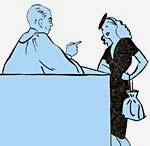 Critics decried judges for being too lenient on prostitutes. (Folder 14, Box 35, Defense Council Records, OSA)
Critics decried judges for being too lenient on prostitutes. (Folder 14, Box 35, Defense Council Records, OSA)
Meanwhile, countless dances and socials were staged by local USO volunteers, drawing female dance partners from as far away as Grants Pass and Yreka, California. The scale of their service was evident by statistics generated by just one of four USO facilities in Medford. The center at 6th and Riverside served nearly 175,000 men in its first full year. During that time, its volunteers dispensed over 210,000 cups of coffee. Entertainment stars also visited the Medford area from time to time during the war. Boxing stars Joe Louis and Sugar Ray Robinson entertained soldiers from Camp White, as did Hollywood actress Ann Sothern, who ate alongside the delighted men in the mess hall. Actress Ginger Rogers, famous for her series of dance movies with Fred Astaire, owned a ranch in the Medford area and chipped in on many causes related to the troops at Fort White.
Footnote 5 For more on the subject of recreation for servicemen, see the chapter:
More to Life Than Wages and Patriotism: Recreation Programs.
Attacking the Supply
While shutting down the demand for prostitutes proved elusive, officials also found little success in attacking the supply end of the equation. The federal May Act of 1941 gave the Secretaries of War and the Navy power to create
prostitution-free zones around military facilities. Military officials were authorized to "take such steps as they deem necessary" to shut down brothels. The threat of federal action spurred 700 municipalities to close their red-light districts by 1944. But along with the clampdown came a sharp increase in venereal disease, as prostitutes moved further into the shadows. This phenomenon, taken with the shocking rise of khaki-wacky young girls spreading venereal disease, led some health experts to call for
supervised brothels for soldiers where
prostitutes would be inspected regularly by licensed doctors.
Footnote 6
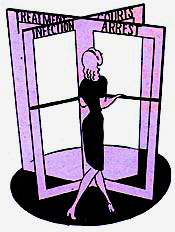 Statistics seemed to support the existence of the so-called revolving door for prostitutes. (Folder 14, Box 35, Defense Council Records, OSA)
Statistics seemed to support the existence of the so-called revolving door for prostitutes. (Folder 14, Box 35, Defense Council Records, OSA)
Experts also called on courts to be more strict with "practiced offenders," since simply arresting prostitutes did not
change their behavior. Federal officials cited a study in which 221 prostitutes in a large city were followed over a three year period. During that time, 150 of the 221 women or girls were arrested for prostitution related charges from one to ten times. One woman was arrested 92 times. Overall, the women were arrested 2,168 times during the three years but 1,986 of the arrests resulted in release or the payment of a small bond. Only 182 arrests led to convictions. Experts claimed that if sentences were long enough, rehabilitation programs could turn around the harmful behavior. However, they cautioned that "the habits of a hardened prostitute cannot be changed overnight." Blaming the courts could also be used to divert scrutiny from a lack of enforcement by police forces. For instance, a federal report in July 1941 asserted that in Pendleton, "the police department exercises no control over gambling or prostitution. The police say that the 'weak-kneed judges' make the task more difficult."
Footnote 7
Prostitution in Oregon
Oregon cities varied
in their experiences with prostitution and venereal disease. An early 1942 report on alleged houses of prostitution in Oregon showed some trouble spots. The problems were bound to grow worse as more
servicemen were sent to training camps, swelling the ranks of
"johns." Moreover, some of the reporting could have been tainted by denial or cover-ups on the part of local police, some of whom may have been paid
to look the other way. Despite these caveats, Pendleton ranked high as a center for prostitution with 12 houses listed. An earlier report claimed:
There are thirteen known houses of prostitution which are licensed by the city as rooming houses. There is no segregated district for prostitutes and there is no legal recognition of prostitution. These houses operate unofficially in Pendleton and are said to house twenty women. It is said there are not many prostitutes outside of recognized houses. [The] venereal disease problem is quite acute, [with] the greater part of infection said to come from infected prostitutes.
Footnote 8
Walter May, chairman of the Recreation Committee of the Oregon State Defense Council, which was charged with helping to reduce prostitution in Oregon, cited a confidential report on commercialized prostitution in Pendleton to support his March 1942 call for more investment in wholesome recreation: "Apparently all roads lead to Pendleton for those seeking recreation. Soldiers claim that the community lacks facilities which would counter the efforts of the prostitution underworld."
Footnote 9
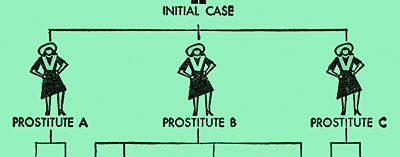 Officials warned that a few prostitutes with venereal disease could wreak havoc on small communities. (Folder 14, Box 35, Defense Council Records, OSA)
Officials warned that a few prostitutes with venereal disease could wreak havoc on small communities. (Folder 14, Box 35, Defense Council Records, OSA)
Other Oregon cities wrestled with prostitution and venereal disease problems.
A report on Klamath Falls listed 7 houses alleged to be for prostitution, including the Iron Door with 4 prostitutes, the Palm with 3, Irene's with 4, and Blond Marie with 2. Astoria was said to have 6 or 7 houses while Medford had 4 to 6 alleged houses. The Albany chief of police took a pragmatic approach to the problem. He claimed there was only one house in his city, with 3 professional prostitutes. He reported that he had received no complaints about the house as a source of venereal disease, but just in case "a plan has been worked out between the Health Officer and the police department whereby any prostitutes given as the source of infection will be quarantined at the town jail while treatment is being given by the County Health Officer."
Footnote 10
The Portland "Situation"
Not surprisingly, Portland had the most prostitutes in the state, considering its large population and defense industries as well as nearby sizable military facilities housing thousands of servicemen. Portland served as a recreational magnet for troops in transit and servicemen on leave from military facilities in Oregon. An early 1942 report lists dozens of alleged prostitution houses in the downtown area. Officials traced numerous cases of venereal disease to many of these houses. For example, on Nov.
26, 1941 a serviceman who contracted syphilis reported contact with a prostitute at the "Green Hotel" while on Dec.
11, a man reported contact with a prostitute at the "West Hill Rooms," resulting in gonorrhea. Other manifestations of vice, such as pick-ups in bars, taverns, and dance halls or street walking by professional and semi-professional prostitutes,
were too dispersed to document.
Footnote 11
 Prostitutes often moved to street corners or bars when prostitution
houses closed. (Folder 14, Box 35, Defense Council Records, OSA)
Prostitutes often moved to street corners or bars when prostitution
houses closed. (Folder 14, Box 35, Defense Council Records, OSA)
According to
The Oregonian newspaper, until 1941 commercialized prostitution was tolerated in Portland within a restricted district: "Women known to the police as professional prostitutes were required to submit regularly to inspection, either by a licensed physician of her own choice or by a physician in the old city clinic." But Lieutenant General J.L. DeWitt, head of the Army's Western Defense Command, put pressure on Governor Sprague to clean up vice in Oregon. DeWitt wrote that "unless rigid control is exercised by the State and Municipal authorities, [it will] inevitably result in there being established in these areas vice resorts of all kinds designed to attract the patronage of military personnel." He also raised the specter of national security,
saying
"in addition to the usual impairment of military efficiency which the presence of such resorts create, there is the constant danger that these places may be employed as agents of subversive and disloyal elements in our midst." Governor Sprague sent
letters passing along the warning to all towns with populations of 5,000 or more as well as smaller cities frequented by servicemen. Later, Secretary of War Henry L. Stimson, put
pressure on Sprague and other governors, calling for the "closing [of] segregated districts and ending the farce of periodic examinations of prostitutes...."
Footnote 12
 Federal officials pressured state and local governments to clamp down on prostitution. Many questioned the efforts of the Portland police and accused
them
of mounting only token raids. (Folder 14, Box 35, Defense Council Records, OSA)
Federal officials pressured state and local governments to clamp down on prostitution. Many questioned the efforts of the Portland police and accused
them
of mounting only token raids. (Folder 14, Box 35, Defense Council Records, OSA)
Portland Mayor Earl Riley acted to placate federal and state
officials and
local groups decrying the toleration of prostitution. In January 1942 he announced "all known houses of prostitution would be closed and that the police had been instructed not only to effect rigid closing but to arrest on sight any woman engaged in 'street walking.'" Portland Police Chief Harry Niles
ordered the operators of 32 "known" houses of prostitution to "close indefinitely." He claimed "police will watch closely to prevent reopening of any of the known bawdy houses."
Footnote 13
Portland Mayor Earl Riley was forced to admit "we have been wrong on this problem" as he promised to begin a campaign to "rid Portland of the venereal disease menace as nearly as possible."
But Portland's efforts at limiting prostitution and venereal disease were destined to drift over the war years, periodically causing political discomfort for
the mayor. In March 1944 the military announced that servicemen were 6 times more likely to contract venereal disease in Portland than in Seattle. Mayor Riley was forced to
admit
"we have been wrong on this problem" as he promised to begin a campaign to "rid Portland of the venereal disease menace as nearly as possible." The effort included staffing a detention center in which women with venereal disease would be held from 30 days to 12 weeks, or until they were non-infectious. Meanwhile, an attorney for "Portland hotel men" said the
hotels would help to suppress vice but that "servicemen often lied about the sources of their infection, blaming 'places' in an effort to protect a 'girl friend.'"
Footnote 14
One year later the situation came to a head again as a citizens' committee, fanned by federal authorities, demanded action to suppress prostitution. On the heels of a scathing City Club of Portland report on the issue, Federal Security Agency anti-prostitution official John Sears turned up the heat on Mayor Riley, saying that police action should have been automatic. Instead, he claimed: "Each flurry of enforcement you have had represents the results of pressure from the army, navy, or federal security agency." Sears claimed even casual visitors to the city have reported that "Portland is wide open." He said that one year after the mayor had assured the public he had shut the prostitution houses down, they were back in business and thriving despite "token" raids. Sears said federal authorities were clear about what was needed, but that:
"In return we have received only lip service and the superficial kind of co-operation that takes action only against those places that are pointed out by the federal authorities."Footnote 15
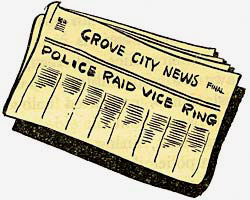 Newspapers and civic groups periodically applied pressure on local governments to crack down on prostitution. (Folder 14, Box 35, Defense Council Records, OSA)
Newspapers and civic groups periodically applied pressure on local governments to crack down on prostitution. (Folder 14, Box 35, Defense Council Records, OSA)
Sears went on to accuse city officials of giving a wink and
a nod to a network of prostitution houses that were highly organized. An undercover investigator hired by the City Club went
to 5 prostitution houses in Portland where he talked with the madames about
the girls and prices. The next day he was met at the door of a prostitution house by
a madame he had talked to the day before at another house. Being business oriented,
she quickly informed him "that she had wasted an hour of her time talking to him then and this time he could not 'see any girls unless he put his money on the line.'" Sears noted that "the significant thing here is the evidence of
organization--the fact that the girls are rotated among a chain of
houses." He went on to charge
that "it is well known that organized houses of prostitution cannot operate without the knowledge and tacit consent of the police department..." and he threatened that if city officials would not clean up the problem, the federal government would intervene using the May Act of 1941.
Footnote 16
Encouraged by the words of federal authorities, the anti-prostitution citizens' committee demanded that the
city take four steps: that the prostitution houses be closed once and for all; that "clandestine" prostitution be controlled by better patrolling in bars, taverns, and other haunts of
prostitutes; that only policemen who "themselves believe in the vigorous enforcement of all laws, and particularly those dealing with prostitution" be chosen for the mission; and that more police be added if their ranks were inadequate to complete the job. Despite the threats, demands, and promises of action, prostitution continued to pose social and health problems for the duration of the war and beyond in Portland, just as it did in other cities across the country.
Footnote 17
Related Documents
 "Meet Your Enemy"
"Meet Your Enemy" Venereal Disease Booklet, Federal Security Agency, 1944. Folder 14, Box 35, Defense Council Records, OSA.
Notes